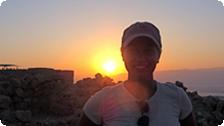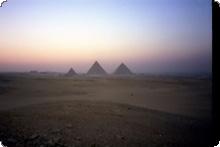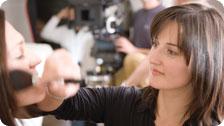by Julia Spiro
I’m half Jewish and half Christian, or at least that’s what I’ve always said. My mother is Unitarian, and my father is Jewish, although neither one is particularly religious. I grew up searching for both Easter eggs and afikomen.
My parents raised me in a relatively secular household in which I was exposed to holidays and traditions of two religions. But the level of “exposure” I got was minimal. Our Christmases centered around decorating the tree and baking cookies, while our sedars always included WASPy family friends who had never been in a synagogue, let alone to a sedar. Still, while our holidays might have been void of real religious meaning, they brought my family together for peace and celebration.
Not only was my household secular, but my elementary and high school education was as well. I hardly had any friends who could quote the Bible or tell the story of Jesus. Even less than this, however, was my number of Jewish friends. Despite going to a relatively diverse school, most of my friends were blond, occasional Sunday church-going children with whom I learned to play tennis and golf. I never felt different or left out. In fact, I felt that I had some special, elite passage into two religions where I got to celebrate twice as many holidays as everyone else.
When I went to college, I was surrounded by friends and classmates with strong religious convictions. I started to feel inadequate not only in my knowledge of religion in general, but also in my lack of a real religious identity. Suddenly, being half of a religion was equivalent to being part of no religion at all. I didn’t think that I deserved to call myself a Jew or a Christian.
During my sophomore year, a Jewish friend suggested that we go on a Birthright trip together to Israel during the upcoming summer. I knew that Birthright was an organization that sponsored free 10-day trips to Israel for young Jewish adults, most of whom are American, but I had never considered going; I never thought it was an option for me. I discovered, however, that the trip was open to anyone with at least one Jewish grandparent on either of their parents’ side, which made me more than qualified. When my friend was forced to back out of the trip due to a summer job, I decided to go through the application process alone.
Within the Birthright organization (the full name of which is Taglit-Birthright), there are about 25 different trip organizers that offer participants different experiences. Some, for example, are more religious than others, while some offer a rugged, athletic experience. I chose a group called Oranim, which friends said was the trip for people who wanted a mix of education, culture, and fun, and who had a minimal religious background. After completing a few simple forms, a casual phone interview, and several weeks of waiting, I received an email informing me that I had been accepted to leave on June 10th of 2008.
My group was comprised of 40 people, from the ages of 18 to 25, all from the States. I could tell, almost immediately, that I was the least religious person on the trip. I tried not to tell anyone that my mother wasn’t Jewish, as Biblically, ones mother has to be Jewish for them to be Jewish, too, regardless of how they are raised. When we visited the Western Wall on our first day, I watched as my weepy-eyed peers became overwhelmed with emotion. I tried to provoke tears myself, as though sadness would somehow prove that I was Jewish, but no tears came and I felt like a guilty outsider.
On our second day, we drove to Tel Aviv, where I was taken aback by the city’s modernity. After having visited Jerusalem, Tel Aviv was a bright change with its billboards and nightclubs. We visited Independence Hall, where Israel was declared a state by the country’s first Prime Minister, Ben Gurion, in May of 1948. We listened to a recording of Gurion’s speech in the room where he gave it, with the original microphones on the podium still intact.
That night, on the shores of the Mediterranean Sea, our group leaders lead the recitation of kiddush for Shabbat. The process, which was new to me, was casual and warm, and as I learned about Shabbat, I came to feel very connected to its meaning. Shabbat is the weekly Sabbath, or day of rest, starting at sundown on Friday night and lasting until sundown on Saturday. So on Saturday, we were allowed to relax at the beach. Although many Jews today modify them, the rules of Shabbat prohibit the use of electronics or cars, in order to abstain from using resources or creating anything new. I loved the idea of having an entire day devoted to ones family, friends, and the luxury of free time.
The next day, we visited the ruins of King Herod’s palace in Ceasarea, which was built on rocks that extend out into the sea and features baths and an amphitheater that are still used today. On our way north, we stopped at the top of the extensive and meticulously landscaped Baha’i Gardens in Haifa, where we could look down onto the coast and see all of Haifa’s white, gleaming buildings.
When we visited an Israeli army base on the border of Lebanon, we were introduced to a group of young men serving their required time in the army. In Israel, boys and girls as young as 18 must go into the army after high school for at least two years, after taking a series of tests to determine their appropriate department. For protection and medical care, every Birthright group is accompanied by an Israeli who has recently completed their service. Our solider was a twenty year old, delicate blond girl named Michal. She carried an old-fashioned rifle slung over her back at all times, and when we went to a bar, museum, or restaurant, she would often plop it down on the floor like a handbag. Israelis paid no attention to this, and I realized that the strong military presence had become normal to most Israeli citizens.
A few days later, we were scheduled to climb Mount Masada at sunrise. Our tour guide told us that anyone wanted to be bar or bat mitzvahed, who hadn’t already, could do so at Masada. I was surprised to see that a significant number of other participants hadn’t gone through the ceremony, all of whom were thrilled to do so now and didn’t see any reason why they wouldn’t. But I wasn’t sure I wanted to do it, and I again felt alienated from the group. I didn’t know what the ceremony would mean in my life, or if I deserved to have a bat mitzvah when I had never even studied the Torah.
I made the rushed decision to go through with it, and I joined the group on top of one of the Masada fortresses where we each read an English portion of the Torah. I still had doubts about what my bat mtizvah meant and how it would affect the rest of my life, but when the ceremony was over, I began to feel a sense of belonging and connection with the rest of the group and the surrounding country.
After Masada, we made our way down the coast to the Dead Sea, where we spent several hours slathering ourselves with mud and washing it off in the stinging salt water. The water was so dense with salt that I couldn’t stay in for more than ten minutes at a time. When I went out to where the water was four or five feet, I could lift my legs and my arms simultaneously up and out of the water. That afternoon, we drove all the way south to trendy city of Eilat, known for its nightlife. We enjoyed a night of dancing at a club, and the next day we spent basking on the shores of the Red Sea.
On our way back up to Jerusalem, where our trip would conclude, we stopped at Ben Gurion’s gravesite and Sde Boker, the Kibbutz where he lived. As I looked at his grave, and thought about his life which I had learned about in the past few days, I felt gratitude towards Israel’s founding father. Prior to my trip, I only knew that Ben Gurion was Israel’s first Prime Minister, but now I knew that he represented Israel’s ongoing struggle for independence and freedom. I knew that my family, and especially my father’s parents, would be proud to see me putting a stone on Ben Gurion’s tomb.
The next night, on Friday, we returned to the Western Wall for Shabbat just as the sun was setting. As we approached the security gate entrance, I heard the buzz of hundreds of people inside and felt a nervous and unfamiliar anticipation. On the women’s side of the wall, I weaved through hundreds of cloaked women, some sitting, others standing, and many holding prayer books and weeping. I put my hands up against the wall, and I felt a rush of warm energy radiating from the ancient stones. Tears started flowing from my eyes, and as I looked at the other women around me, the women from whom I felt alienated just a week ago, I realized that I had become one of them.
I surprised myself that night with my overwhelming sense of spirituality. As though there was a sudden shift in my emotions, I felt a new connection to the thousands of people around me, singing and dancing in prayer and celebration. I suddenly knew what it all meant, and I realized that my relationship with Israel had nothing to do with how religious I was or how I was raised. I had been trying so hard to define my religious identity, and I learned that night that I didn’t have to define it, because it already existed. I was Jewish through my heritage, through my family, and through my own values. This was who I had always been, but I only discovered it through my visit to Israel.
For more information on Taglit Birthright, visit their Web site.
For more information on Oranim, visit their site.










